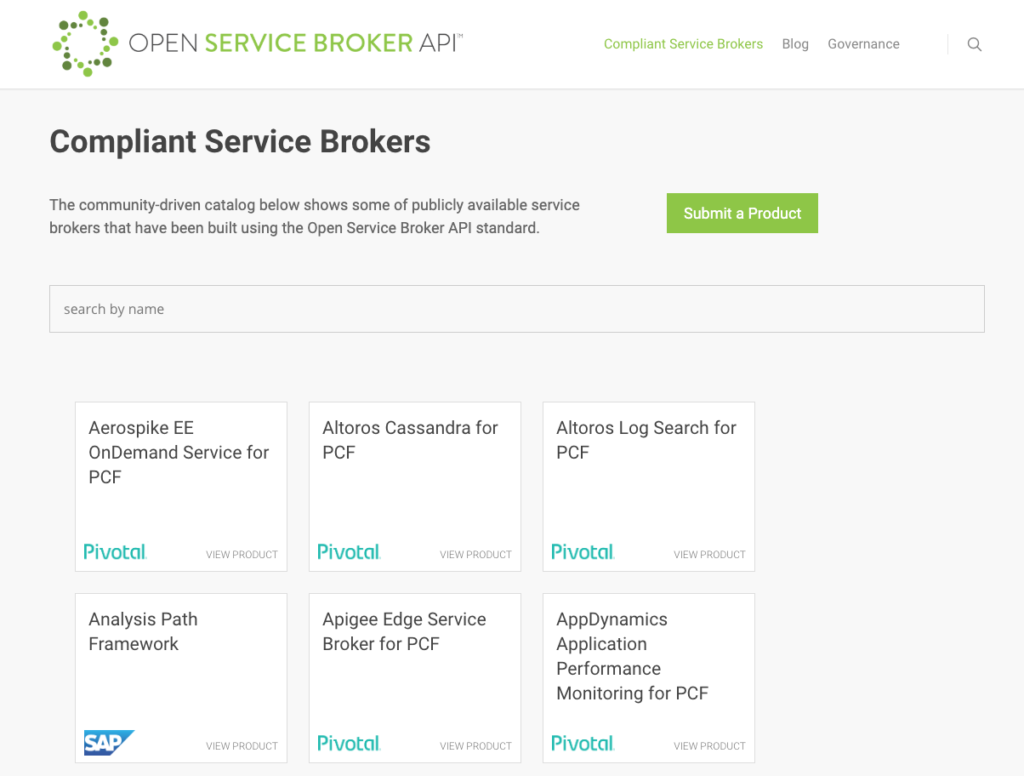It’s been 10 months since v2.14 of the Open Service Broker API was released, and so we are happy to announce a long list of new features that are available today for service providers to start using (make sure you check the compatibility file to see which platforms support each feature).
Our focus for this release was on making changes to the specification which would allow platforms (including Cloud Foundry and Kubernetes) to provide improved user experiences for a wide range of marketplace services. The full list of features can be found in the release notes, and we have highlighted some of the more noteworthy ones below.
Service bindings can now contain a list of endpoints
When an application is bound to a service instance, the application will usually need to know how to start talking to that service instance. Service bindings usually contain information like URLs, usernames and passwords, but until now it has been non-trivial for platforms to understand how to use that information.
As of this release, service bindings can now contain a list of endpoints, which provides a structure around information such as hostnames, ports and protocols. This will enable platforms to automatically set up any network connectivity between applications running on the platform and service instances running on any other infrastructure.
Service instance upgrades
There are situations in which a developer may want to upgrade a service instance, but that upgrade cannot be represented by either a plan change or through a configuration parameter. An example of this is upgrading the underlying operating system that a service instance is running on. This will often cause downtime for the service instance, so platform operators do not want to trigger this themselves or for it to happen automatically.
Service plans can now contain a maintenance_info field, which can be used to provide further information to developers about what version of the software is running and what version a service instance can be upgraded to.
Enable and disable upgrades of specific plans
The plan_updateable field can now be added to service plans, providing more control to service providers over which plans can be upgraded/downgraded/sidegraded to another version.
Clarified orphan mitigation scenarios
A number of scenarios can lead to orphaned service instances and service bindings being created on a service broker, and so the community spent some time understanding how these situations could arise and putting in tighter rules to help service providers know what they are expected to do in each situation.
Improved asynchronous operations
Service providers can now specify a timeout for asynchronous operations for each service they offer, and can also give platforms a hint as to when they should next poll for the status of an ongoing asynchronous operation.
This can be used to give developers a better idea of how long an operation is going to take and reduce the number of redundant calls made between platforms and service brokers.
We hope you are excited about the long list of new features in this release and look forward to seeing how these features are adopted in the community. As always, if you have any feedback we would love to hear it!
 Thanks to Brie and the rest of the Cloud Foundry Foundation team for all of their hard work building this! If you have any questions or feature requests, please get in touch with us on Slack.
Thanks to Brie and the rest of the Cloud Foundry Foundation team for all of their hard work building this! If you have any questions or feature requests, please get in touch with us on Slack.

